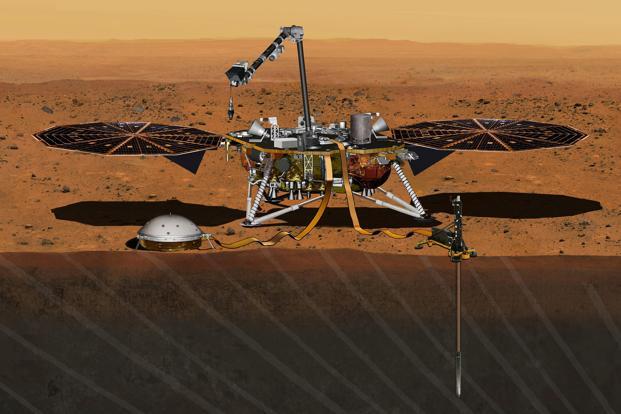Nasa’s InSight Spacecraft has now touched down on the surface of Mars on Monday. The lander is also successful in sending back to earth its full color images of the Red Planet’s surface or grounds, according to latest reports.
The confirmation of the Nasa’s InSight Spacecraft successful Mars landing came through on cue to Nasa back on earth around 19:53 GMT. Previously, InSight had been issuing a series of updates throughout the lander’s descent and all of these were received about eight to 10 minutes after transmission due to interplanetary delay.
There was also a seven-minute window during which InSight used to decelerate from around 13,000 mph to about 5 mph in a landing based fully on pre-programmed data and autonomous navigation scheme.
Nasa’s InSight Spacecraft, it was also revealed, survived hot temperatures; hot enough to melt steel. It experienced that hot temperature as it was entering the atmosphere, then it launched its parachute and 12 retro-rockets to quietly and lightly touch down in its already designated landing area in a vast flat plain which is close to the Mars equator known as Elysium planitia.
As soon as the landing took place, InSight quickly embarked on deploying its crucial solar panels that had been stowed away during the descent. The idea was to immediately generate system power and to warm up its equipment in Mars because the place had sub-zero temperatures. This was done and the report came back to earth in about seven hours at which point Nasa team began to believe they had made a success of the whole journey.
InSight’s 300-million mile journey has been made with this spacecraft landing and this has taken a better part of a year, approximately seven years. About a billion dollars have been spent to make this happen.
There were cheers from Nasa mission control room at California’s Jet Propulsion Laboratory (JPL) when the confirmation came through of the successful Mars landing. The Nasa team celebrated the event in what they called ‘an amazing day’ and the director of JPL, Mike Watkins clarified that the success should remind everyone that ‘to do science we have to be bold and we have to be explorers.

